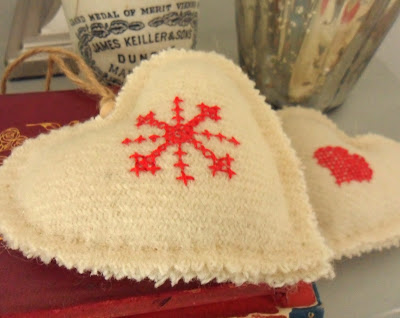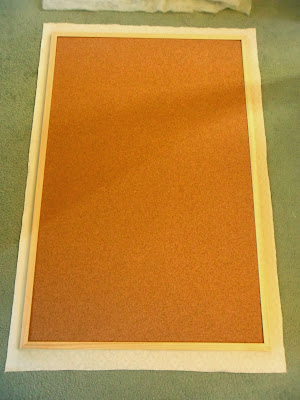Hello everyone, I hope you all had a good weekend.
Last week was rather busy with some sewing and painting furniture projects, as well as junking and antiqueing, and all the usual rather more mundane day to day stuff . So with all that on top of a bit of socialising, and a lot of dog walking, I somehow didn't find the time to blog, but here I am today better late than never!
Rummaging around the local charity warehouses last week I found this pretty coffee table with a partly split leg for £10. My other half glued this back together easily, and after a lovely time messing around with Annie Sloan Chalk Paints and wax I transformed it from its original dingy brown-ness.........
into something a little more pale and elegant..........
It is now painted in two gentle colours: Annie Sloan Chalk Paint Country Grey and Original.
And to me it now has a distinctly French feel about it.
Here's what I did:
Once the wood glue was dry on the leg, I dusted the table down then wiped it clean with a damp cloth.
Once dry, I painted the whole table with Annie Sloan Country Grey, then when that was dry I gave it a light sanding with fine sandpaper all over.
I then painted the main table top with another coat of Country Grey, and I painted the sides under the table top with a random patchy coat of Annie Sloan Original, touching up with more paint where I felt it needed a bit more depth of colour.
I then painted a thin stripe of Original above the carved edge of the table top (see below) and I picked out the carving on the legs with Original too.
I then sanded the whole lot again once the paint was dry, sanding quite hard where I wanted a bit of distressing, mainly over the carved areas and where the paint would wear most naturally when knocked and bumped into.
Be sure to wipe off all the dust created by sanding.
I then waxed the table all over using Annie Sloan Clear Wax and let it dry for a day. I then buffed it up to give it a lovely soft shine.
The table came with a fitted glass top, but if it hadn't then I would have put a second coat of wax on the table top once the first coat was dry and buffed.
It feels beautifully smooth and silky, mainly because of sanding before the wax. I love a silky-smooth finish, and sanding before waxing when using Annie Sloan paints gives you just that.
A word of warning: don't be tempted to buff too soon after waxing.
I find it needs at least an overnight wait, and if it still feels a little damp or tacky in places then be patient or else it will rub off where it isn't properly dry once you start buffing. And then you pay the price for your impatience by having to re-wax over those rubbed-off areas!
So I now allow a good 24 hours to dry and then it buffs up a dream!
Poor Logan can't understand why I keep taking photos of the table and not him!
***
More Annie Sloan Chalk Paint Projects
To see my other furniture transformations and projects using Annie Sloan paints then go to my sidebar under categories and search under Annie Sloan or Painted Furniture, or click on the links below for specific projects.
To see how I transformed a kitchen dresser using AS Old Ochre click here....
To see how I updated an old wooden bureau using AS Country Grey click here
See how I transformed an old wooden table with shelf into a dog bed, click here!
before....
and after - one happy dog!
Updating an old brown chest of drawers using AS Antoinette click here
To see how to make shabby chic plant pots click here
This frame above is the one I painted as part of the Annie Sloan painting course at Dovetails Vintage!
***
Since my last post I've had a couple of visits to the local Antique and Flea Market, and found a few vintage lace and linen pieces, as well as some fabric and a few other vintage bits and pieces.
Here's a few of my finds........
Found this sweet little vintage cross-stitch pin-cushion - it is tiny, (probably only a couple of inches wide) as are the neat stitches. 50p!
And some gorgeous shot taffetas - one a lovely rich amber colour, shot with a darker shade, and a teal (shot with lilac) - beautiful! Only £1 each length, both about 2 m each - bargain!
And some gorgeous shot taffetas - one a lovely rich amber colour, shot with a darker shade, and a teal (shot with lilac) - beautiful! Only £1 each length, both about 2 m each - bargain!
A large, very thickly padded old-fashioned teacosy in a tapestry type fabric called out to me.......buy me, buy me!
So how could I not for £2!!!
A gorgeous pair of vintage Laura Ashley curtains.......
Some vintage crochet patterns..........look at how elegant this blouse is, as is the lady modelling it!
I was excited to find these crochet edgings.... I love making crochet edgings and look forward to trying out some of the easier ones here, and adapting the more complex ones into something my simple crochet skills can cope with!
Some gorgeous vintage embroderie anglais trims and edgings.....
a sweet round vintage work basket and more embroderie anglais.....
And lots of sewing bits and bobs, old elastics and petershams, ribbons and trims....
and some lovely Dorcas pin tins, and an old tape measure
and more beautiful white vintage lace and linens.
These are just some of my finds over the last week or so.
Bringing these home and sorting them has made realise that I must get serious about culling some of my vintage linens and laces, and start to sell some of them on-line. I find it hard to pass up beautiful vintage linens when I find them, but a lot of them need new homes if I am not going to use them myself as they are in their original form, or re-make them into something new.
So already on the list of "things to do" in 2014 is to set up a Vintage Gillyflower Etsy shop.
In the meantime I am making heavy weather out of stocking my Etsy shop with some Christmas Goodies.
Having never put anything up for sale in my Etsy shop I am at last plodding away with the "taking of photos" stage, having already prepared a list of what is going in the shop.
Here's a sneak preview of some of the many Xmas decorations awaiting listing.....
vintage embroidered wool hearts, antique mangle cloth hearts, lavender-filled mangle cloth hearts, tea-stained ticking doves.......
vintage white linen hearts with vintage lace or printed fronts........
hessian Christmas tree hangers......not many left
natural linen hearts with stencilled number 25.......still lots of these
rusty tin heart hangers.......not many left
vintage linen hearts printed with "Paris".........
All the above and much more to be listed in the next few days in my shop.
If anything takes your fancy in the meantime, please email me for details and prices.
EDITED 30 NOV
Finally "gone live" with my Etsy Shop! Now open for business!
click on the link here to have a peep"
EDITED 30 NOV
Finally "gone live" with my Etsy Shop! Now open for business!
click on the link here to have a peep"






























































